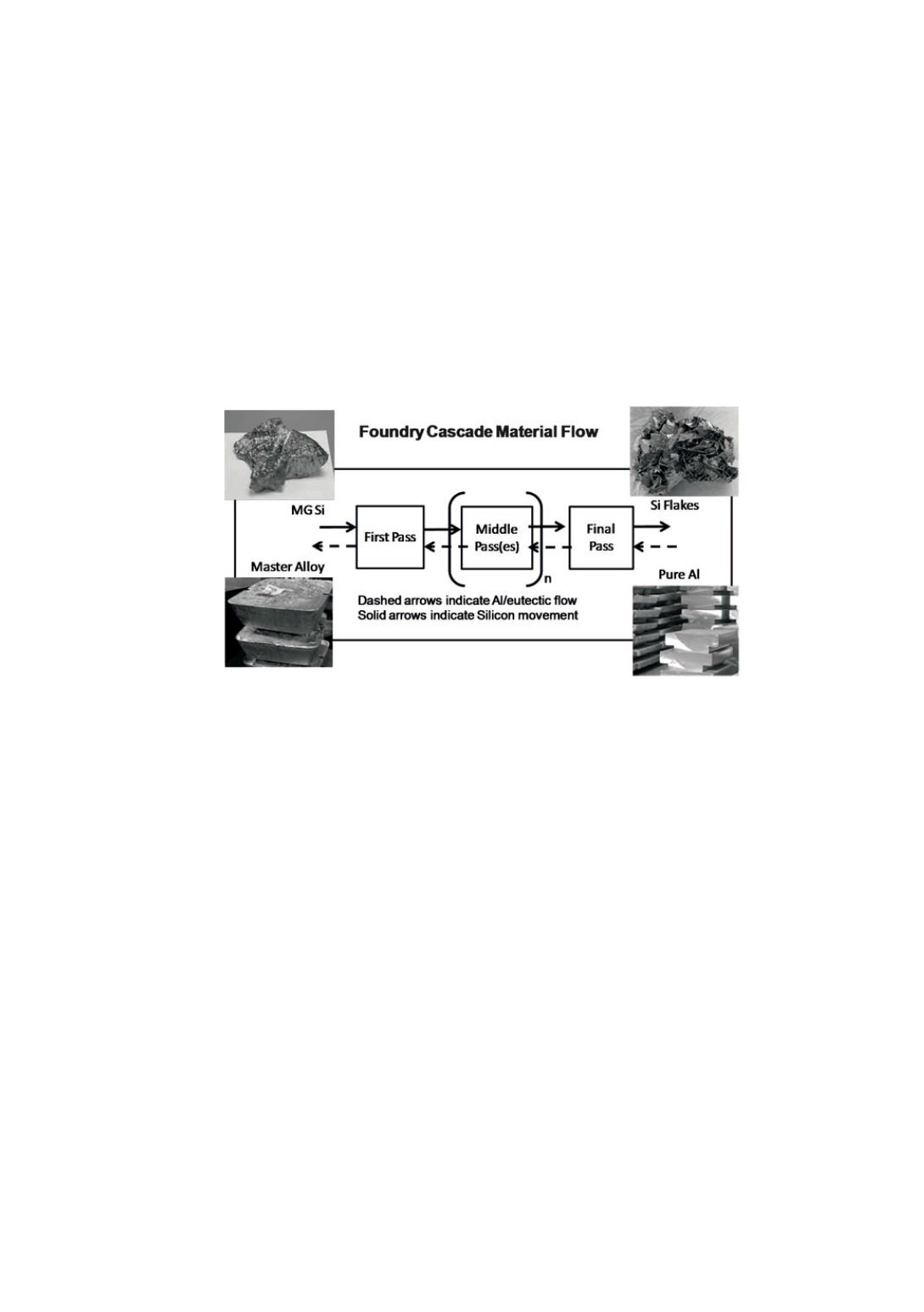

Current development of the Solvent Growth Refinement
At the present state a counter current system is used to achieve purification over a number
of solvent growth passes like shown in Figure 1, which involve the melting and
solidification of the Al-Si alloy at ever increasing purity. In effect the incoming pure
aluminum acts to dilute the impurity levels and the solidification at each pass acts to
segregate these impurities so that they end up in the master aluminum alloy.
Figure 1:
Material flow during the solvent refining.
In such process the clean silicon, which already has seen several passes of purification,
can only get in contact with the most pure aluminum making sure there is no cross
contamination between different levels of the purification steps. The number of passes
can be varied according to the quality of the incoming material and the target specification
of the process [3].
A further significant improvement of the process can be achieved when the spent eutectic
is purified and recycled. This reduces the amount of fresh aluminum needed in the
process, makes the control of impurities simpler and enhances the reduction of boron and
phosphorus in the silicon. The purification of the eutectic can be carried out at low
temperature in liquid state and using the same simple equipment. Therefore a current
R&D focus is on purification of Si-Al melts.
Figure 2 shows some examples for the B- and P- contents of commercially available high
purity aluminum and the resulting B- and P- contents of purified eutectics. Since the
purification result of the eutectic is based on a chemical equilibrium and doesn’t depend
on the input quality, lower quality and lower-cost aluminum can be used and the
impurities do not accumulate during the recycling. If purified Al-Si is used during the
solvent growth step, the B- and P- removal is improved in contrast to the current state
process as shown in Figure 3. To make both versions of the process comparable
purification factors X
B or P
= [B or P]
single sample
/[B or P]
median, MG-Si
are shown.
10


















